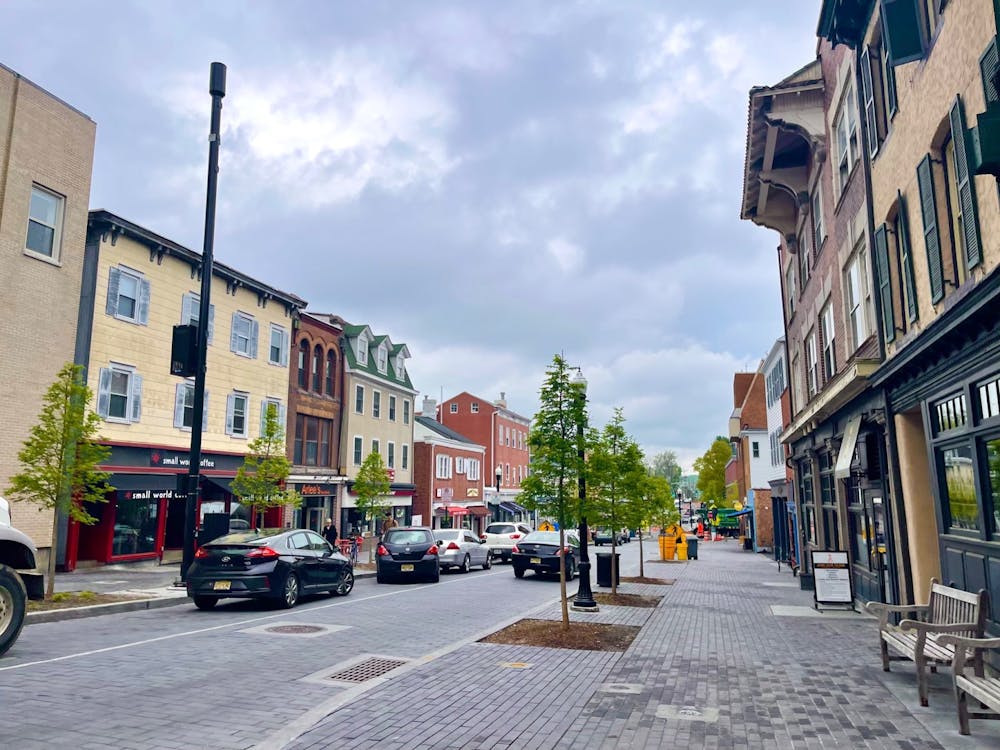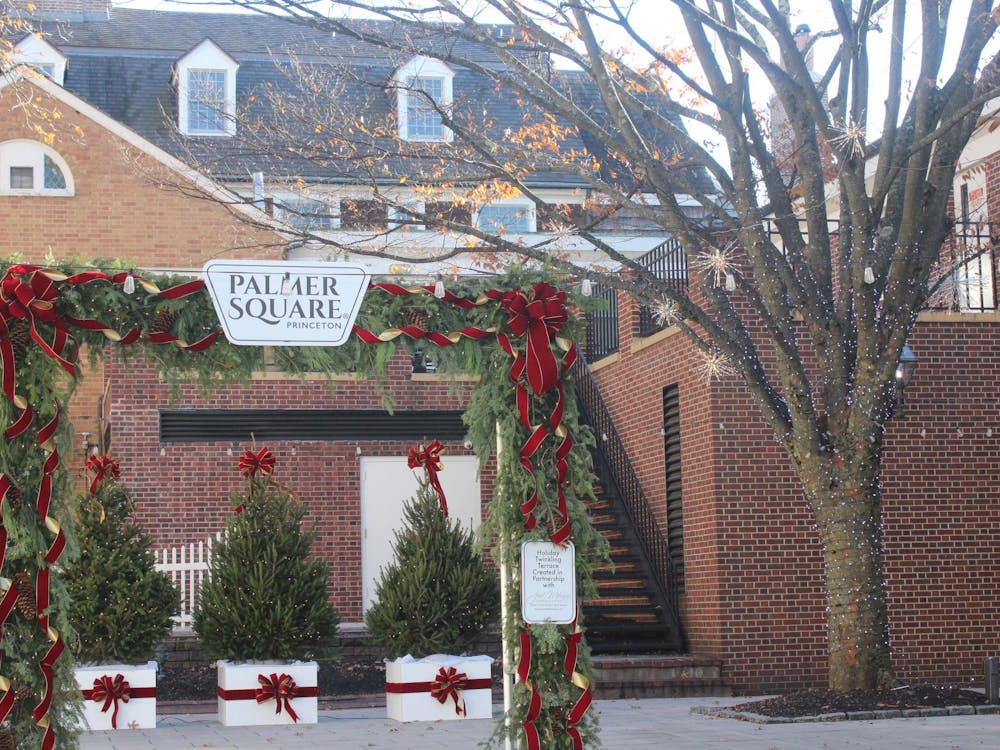Correction: This piece has been updated to clarify Princeton’s taxed and untaxed contributions to the town and county, and the fact that it has not acquired a significant amount of new land in recent years. The ‘Prince’ regrets these errors.
If Cornell paid property taxes on all of its properties, Ithaca could lower taxes city-wide by roughly forty percent this fall. Columbia’s tax-exempt status caused the budget cuts of emergency municipal services in New York City. University of Pennsylvania’s negligible tax payments exacerbated the resource scarcity at local public schools. At the end of 2021, the total endowment fund of American colleges and universities amounted to nearly one trillion dollars, and 132 universities alone have endowments that were valued at over a billion dollars. And yet, the tax revenue paid to the surrounding municipalities of these institutions is disproportionate to what duty demands. Princeton University is no exception, and as its construction efforts continue, the need for increased support becomes ever more apparent. The University should both curb its current expansion and reevaluate its financial contribution to the orange bubble — at least, before it all pops.
Princeton, like the vast majority of American colleges and universities, benefits from the generous and extensive federal tax exemption provided by the Internal Revenue Code (IRC) 501 (c)(3). Because the IRC recognizes the educational purpose provided by universities as fundamental to improving the capacities of the American people, such institutions are legally classified as “charitable organizations” and are thus eternally relieved from the burden of paying taxes of any sort, property taxes included. However, this designation comes at a significant cost to the public.
In November 2015, 27 residents from the historically Black midtown neighborhood of Witherspoon-Jackson sued the University over its role in contributing to rising property taxes in the community. In Fields v. Trustees of Princeton University, the plaintiffs claimed that Princeton’s status as a non-profit organization should be revoked due to the commercial royalties that Princeton annually derived from its research and innovative development. Yet, the case never made it to the courtroom: after a month of negotiation, the University reached a settlement with the residents. The settlement concluded that Princeton would make several payments, totaling 18.2 million dollars, over the next six years to the township and to residents in order to provide property-tax assistance. The payments on this settlement officially expired six years later, in October 2022, and as of October 2023, a new financial plan has yet to be determined. While the plaintiffs agreed in settlement that the agreement “is not to be construed as an admission that any of the University’s exempt property should be subject to taxation,” the settlement does indicate that left to its own initiatives, Princeton will not sufficiently support the community. The University must do more to lower housing costs in its surrounding locale and develop a long-term plan for mitigating the effects of rising property taxes.
Revenue from property taxes funds myriad public services, such as maintenance, repair, and emergency response departments. Indeed, much of a town’s thriving infrastructure can be attributed to the steady backbone of property taxes that sustains its livelihood. However, because property tax is levied on all real properties, if institutions like Princeton don’t make sufficient payments, then local municipalities and metropolitan areas face a dearth of revenue. Consequently, the residents then bear the brunt of supplementing any potential revenue that the University might have otherwise generated through property taxes.
In Fields, Bruce Afran, a civil rights lawyer who defended the Princeton plaintiffs, estimated that “people in Princeton pay at least one-third more in taxes because the University has been exempt all of these years.” Financial analyses in 2015 further estimated that residents could see as much as a 50 percent tax deduction if the University’s tax exemptions were revoked in their entirety.
Given the financial burden faced by residents, many tax-exempt institutions still make voluntary Payments in Lieu of Taxes (PILOTs) to their surrounding areas. Indeed, prior to the Fields lawsuit, Princeton made an annual donation to the township (estimated to be $2.75 million in 2014) along with several other one-time contributions to other municipal projects. Yet, given the institution’s 2014 endowment of $21.0 billion at the time, this contribution was little more than pocket change. Almost a decade later, in March 2023, Princeton announced its most recent donation: a $14.6 million donation to Princeton public schools over the next five years, as well as a $5 million unrestricted contribution to the town itself and a $1.335 million contribution to Mercer County. But given that the endowment has since risen to $35.8 billion, the University’s payments are now representing an increasingly smaller amount of Princeton’s revenue and resources Albeit beneficial, these contributions do little to alleviate the most pressing danger faced by the township: further inflation of cost-of-living prices.
It is no coincidence that the town of Princeton ranks within the most expensive cities in the United States, having scored a 148.1 on the cost-of-living index. Neither is it happenstance that in January 19th 2023, fifty postdoctoral researchers sent an open letter to the University, requesting an annual salary increase from $54,840 to $65,000 simply to offset the high cost of living in the Princeton area. On January 31, 2023, Princeton University’s Board of Trustees approved a 2.5% mid-year salary raise for eligible faculty and staff. Inflation is rendering the town unlivable. A one-bedroom apartment in Princeton currently costs $2716 in monthly rent, which is both twice the national average ($1702) and an approximately 16 percent increase over the past two years. As of 2023, Princeton is the fourth most expensive college town. The University’s constant development and aggrandizing expansion has not helped matters. As Princeton’s non-taxable property continues to creep over the surrounding townships, the lack of accessible land may bring about a shortage of available and affordable housing. A greater demand for housing will cause the already excessive prices of real estate to skyrocket. Local residents might also be forced to supplement a greater amount of local revenue that property taxes on these areas would have otherwise supplied. Yet the expansion continues to grow.
While having the federal designation of a non-profit and non-political educational institution, Princeton has continued to expand its endowment, resources, and property by a substantial degree. Since 1902, the University’s total acreage has increased roughly elevenfold, from 200 acres to over 2,300 acres. Over the course of this expansion, the boundaries of Old Nassau’s reach have been increasing across the West Windsor and Plainsboro townships alike. The 2017 University campus plan cites its acquisition of lands in Plainsboro towards the end of the twentieth century as important for its financial and campus development. As we see the student body continue to grow, what’s to suggest that Princeton’s land expansion has ended? These students require more classrooms, facilities, and thus money spent, and Princeton is constantly thinking ahead. The University must be proactive in its consideration of the Princeton community as well as its students.
Shortly after the Fields trial in December 2017, Princeton published their 2026 University Campus Plan that both provided a development framework through 2026 and also accounted for potential development needs and opportunities over the next 30 years. The plan proposes several enhancements, including the construction of transportation routes, town gateways, a slew of department expansions, an additional health center, and two new residential colleges, one of which is set to debut in 2027 to account for the enlarged student body. Both the undergraduate student and the transfer student population have seen notable increases in the Class of 2027, as Princeton prepares to add an additional 500 students over the course of the next four years. With every passing year, Princeton’s vast property and influence continues its encroachment on the local municipality.
If the University continues its expansion into nearby townships like West Windsor, which has the second highest property tax in Mercer County behind the town of Princeton, the residents of West Windsor might also begin to suffer from the steeper prices. Furthermore, for every new department erected, residents will bear the brunt of the burden as the University continues to reap the benefits from public services without paying proper revenue. The expansion, development, and construction of its landholdings may soon prove devastating.
In 2015, Afran predicted that “if all of the school’s property were taxed, the bill would come to roughly $28 million a year.”The net worth of Princeton’s assets and property have grown substantially over the last decade. In 2022, the assessed value of the University’s property was found to be nearly $2 billion, however only 22% of it was found to be tax-viable after taking recently accumulated properties into account. Thus, the University pays an estimated $10 million in tax fees on its taxed land. However, when the cost of residential living is ever-steepening at a drastic rate, this is still insufficient. Princeton’s current endowment trumps the GDP of most countries, yet if its property continues to expand, the orange bubble may be fundamentally unable to sustain itself. Princeton University needs to accordingly reevaluate the degree to which it influences the surrounding municipality, decrease its accelerated construction, and fundamentally restructure its contributions to the surrounding infrastructure.

Wynne Conger is a freshman and prospective SPIA major from Bryn Mawr, Pennsylvania. She can be reached by email at wc2918@princeton.edu








